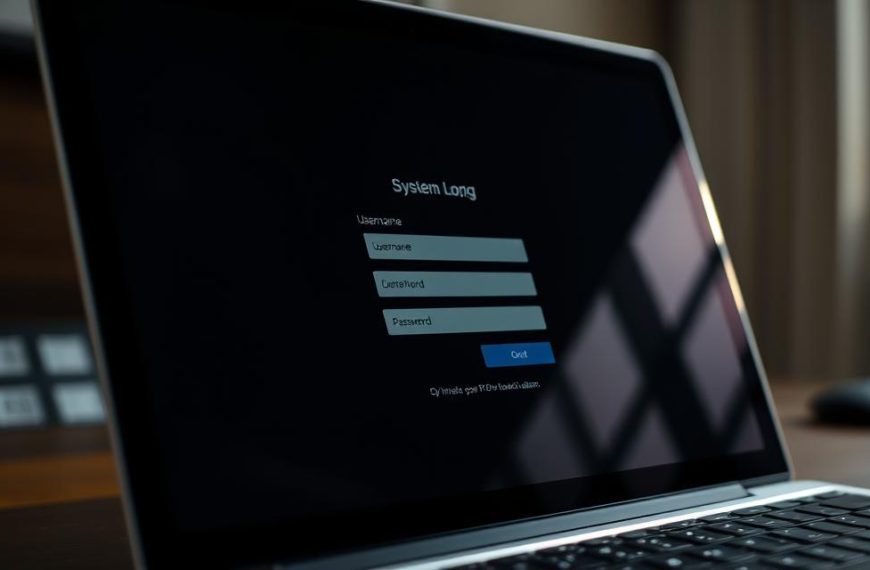Buffer overflows remain a critical threat to modern systems. They occur when a program writes data beyond its allocated memory space, often corrupting the stack. This vulnerability can enable malicious code execution, compromising system security.
Inspired by coal mine warning systems, canary values act as sacrificial data placed between buffers and control data. When unauthorized memory access occurs, these values are altered, triggering immediate detection. This early warning mechanism helps prevent full system compromise.
Major compilers like GCC, LLVM, and Visual Studio implement canary values for enhanced protection. Studies show their performance impact is negligible, making them a practical solution for safeguarding programs. By ensuring stack integrity, canary values play a vital role in modern security frameworks.
What Are Canary Values in Computer Systems?
Memory corruption remains a significant challenge for software security. To combat this, canary values act as cryptographic sentinels placed within memory structures. Named after the historical coal mine safety practice, these values serve as early warning systems for unauthorized access.
In modern systems, canary values are implemented as stack cookies. They are strategically positioned between buffers and critical control data, such as the return address. This placement ensures that any attempt to overwrite the stack will alter the canary value, triggering immediate detection.
During function return sequences, the system verifies the integrity of the canary value. If it has been modified, the program halts execution, preventing potential attacks. This verification process is a cornerstone of stack protection mechanisms.
Over time, canary values have evolved from simple terminator variants to more sophisticated XOR-based versions. These advanced forms offer enhanced resistance against exploitation techniques. Real-world adoption is evident in Linux distributions like Fedora and Ubuntu, which integrate these protections into their security frameworks.
While canary values are effective, they are often complemented by other defenses like bounds checking and ASLR. Together, these mechanisms create a multi-layered approach to system security. Analogous to physical security systems, canary values act as alarms, alerting administrators to potential breaches before they escalate.
How Canary Values Detect Buffer Overflows
Stack vulnerabilities pose a persistent risk to software integrity. These issues often arise when programs attempt to write data beyond their allocated memory space. Such actions can corrupt the stack, leading to severe security breaches.
One of the most common exploits is the buffer overflow. This occurs when functions like strcpy() or gets() are misused, allowing attackers to overwrite critical memory regions. These regions often contain control data, such as the return address, which dictates the program’s execution flow.
Understanding Buffer Overflows
The stack is a critical memory structure used during function execution. It stores local variables, function parameters, and return addresses. When a buffer overflow occurs, attackers can overwrite these elements, redirecting the program to execute malicious code.
For example, if a program allocates 10 bytes for a buffer but writes 15 bytes, the extra 5 bytes can corrupt adjacent memory. This manipulation can lead to unauthorized code execution, compromising the entire system.
The Role of Canary Values in Detection
To counter these threats, canary values are placed between buffers and control data. These values act as sentinels, detecting unauthorized memory access. If an attack attempts to overwrite the stack, the canary value is altered, triggering immediate detection.
During the function return sequence, the system verifies the integrity of the canary value. If it has been modified, the program halts execution, preventing further damage. This process is a cornerstone of modern stack protection mechanisms.
| Component | Role |
|---|---|
| Buffer | Stores temporary data during function execution |
| Return Address | Directs program flow after function completion |
| Canary Value | Detects unauthorized memory access |
By integrating canary values, developers can significantly reduce the risk of buffer overflow exploits. This approach ensures that even if an attack occurs, the system can respond before critical damage is done.
Types of Canary Values
Modern security frameworks rely on diverse techniques to protect memory integrity. Among these, stack canaries stand out as a critical defense mechanism. They come in various forms, each designed to address specific vulnerabilities and enhance system security.
Terminator Canaries
Terminator canaries are designed to halt string operations when they detect unauthorized access. These canaries use specific values like 0x000aff0d, which are unlikely to appear in normal data. When an attack attempts to overwrite memory, the terminator value is altered, triggering an immediate response.
This type is particularly effective against string-based exploits. By stopping malicious operations early, it prevents further memory corruption. Terminator canaries are widely supported by major compilers, making them a practical choice for developers.
Random Canaries
Random canaries add an extra layer of security by using unpredictable values. These canaries are generated from secure entropy sources like /dev/urandom. Their randomness makes it difficult for attackers to guess or bypass them.
This technique is especially useful in environments where predictability can be exploited. By ensuring that each stack canary is unique, random canaries significantly reduce the risk of successful attacks. However, they require robust entropy sources to maintain their effectiveness.
Random XOR Canaries
Random XOR canaries combine the unpredictability of random values with additional protection mechanisms. These canaries are XORed with critical control data, such as the return address. This makes them resistant to certain exploitation techniques.
By integrating randomization and data structure protection, XOR canaries offer enhanced security. They are particularly effective in complex systems where multiple layers of defense are needed. This type is often used in high-stakes environments like financial systems and IoT devices.
Each stack canary variant has its strengths and is suited to specific use cases. By understanding these differences, developers can choose the right techniques to safeguard their applications. Together, these canaries form a robust defense against memory corruption and unauthorized access.
Implementing Canary Values in System Security
Effective system security relies on proactive measures to detect and prevent unauthorized access. One such measure is the use of stack canaries, which act as sentinels to guard against memory corruption. These techniques are essential for maintaining the integrity of modern systems.
Stack Canaries
Implementing stack canaries involves configuring compilers to insert protective mechanisms. For example, GCC offers flags like -fstack-protector and -fstack-protector-strong. These flags ensure that functions with buffers over 8 bytes are protected by a canary.
On Windows, the /GS compiler switch provides similar protection. This switch inserts a canary value between buffers and critical control data, such as return addresses. When a buffer overflow occurs, the canary is altered, triggering an immediate response.
Debugging stack canaries requires understanding their behavior. For instance, canary checks occur before function return. If the check fails, the program calls __stack_chk_fail, halting execution and preventing further damage.
Canary Tokens
Beyond stack canaries, canary tokens offer an additional layer of security. These tokens track attacker IPs and timestamps, providing valuable forensic data. They are particularly useful in cloud environments like AWS and Azure.
Integrating canary tokens with modern CI/CD pipelines enhances security. Automated deployment ensures that these tokens are consistently applied across all stages of development. This approach reduces the risk of human error and improves overall protection.
Combining canary tokens with WAF and IDS systems creates a multi-layered defense. This strategy ensures that even if one layer is breached, others remain intact, safeguarding the network.
For more insights on stack canaries, visit this detailed guide.
Benefits of Using Canary Values
Modern systems face constant threats from memory corruption and unauthorized access. To combat these challenges, canary values offer a proactive method for enhancing security. By acting as sentinels, they provide early warnings and robust protection against potential attacks.
Early Detection of Threats
One of the primary advantages of canary values is their ability to detect threats early. Studies, such as those conducted by MITRE, show a 63% reduction in successful stack attacks when these values are implemented. This intelligence allows systems to respond before significant damage occurs.
By integrating with SIEM systems, canary values enable centralized monitoring. This accelerates incident response, ensuring that threats are neutralized quickly. Such early detection is crucial for maintaining system integrity.
Enhanced System Protection
Another key benefit is the near-zero performance overhead. SPEC benchmarks reveal an average impact of just 0.8%, making this method highly efficient. This ensures that security enhancements do not compromise system speed or functionality.
Additionally, canary values complement other protections like ASLR and DEP. Together, they create a multi-layered defense, future-proofing systems against evolving attacks. This approach is particularly valuable in regulated industries, helping organizations meet standards like PCI DSS and HIPAA.
By leveraging canary values, developers can achieve a balance between robust security and optimal performance. This makes them an essential tool in modern system protection strategies.
Conclusion
Proactive security measures are essential to safeguard against evolving threats. By integrating canary values, developers can detect buffer overflows early, ensuring robust system integrity. These mechanisms, combined with runtime protection technologies, create a multi-layered defense.
Emerging trends in memory protection focus on enhancing detection accuracy and minimizing performance impact. Enterprises should prioritize deploying these strategies to meet compliance standards and mitigate risks effectively.
For optimal results, conduct regular security framework assessments. Explore next-gen techniques like AI-driven anomaly detection to stay ahead of threats. Resources and implementation guides are available to streamline this process.












